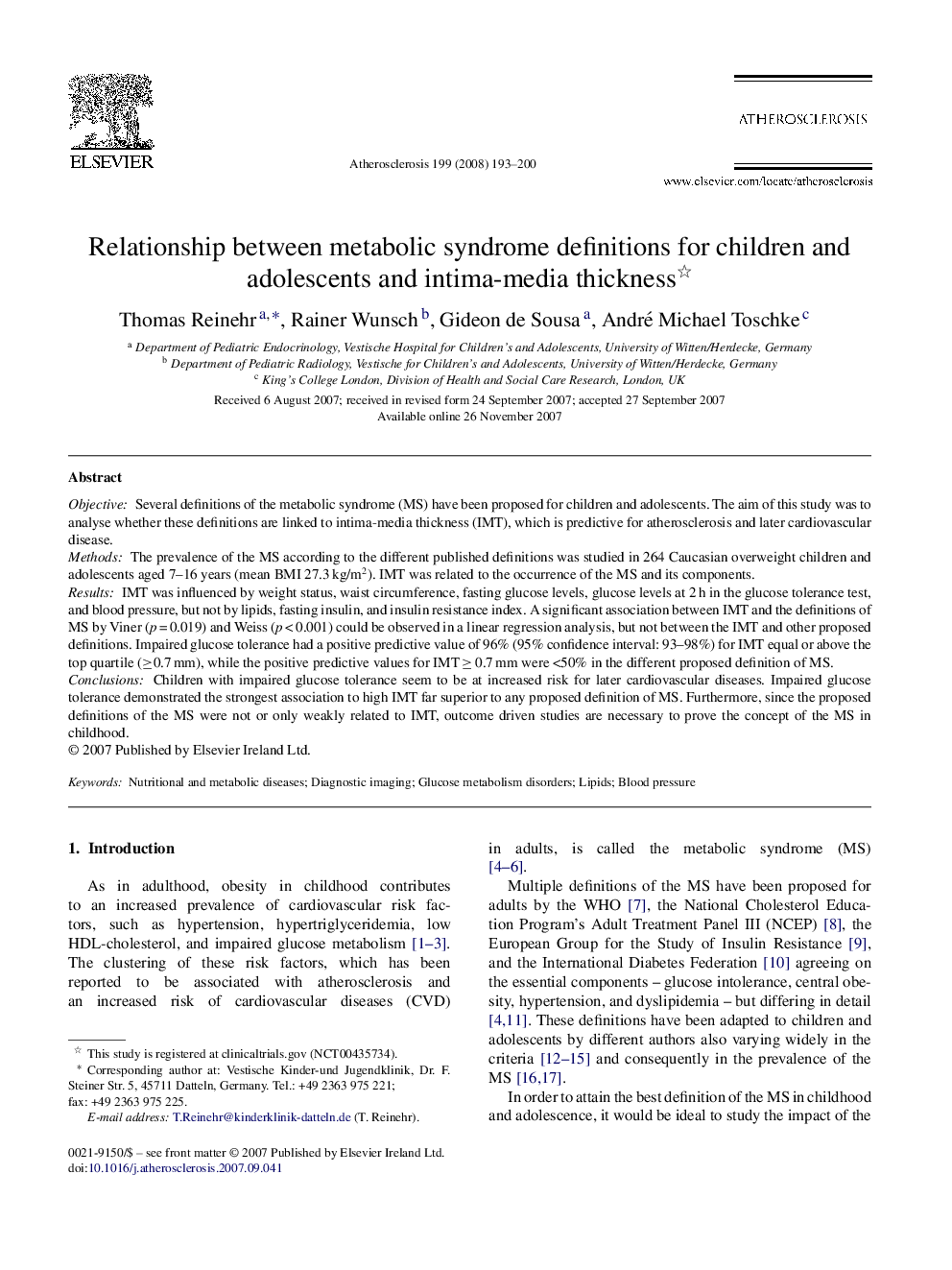| Article ID | Journal | Published Year | Pages | File Type |
|---|---|---|---|---|
| 2894106 | Atherosclerosis | 2008 | 8 Pages |
ObjectiveSeveral definitions of the metabolic syndrome (MS) have been proposed for children and adolescents. The aim of this study was to analyse whether these definitions are linked to intima-media thickness (IMT), which is predictive for atherosclerosis and later cardiovascular disease.MethodsThe prevalence of the MS according to the different published definitions was studied in 264 Caucasian overweight children and adolescents aged 7–16 years (mean BMI 27.3 kg/m2). IMT was related to the occurrence of the MS and its components.ResultsIMT was influenced by weight status, waist circumference, fasting glucose levels, glucose levels at 2 h in the glucose tolerance test, and blood pressure, but not by lipids, fasting insulin, and insulin resistance index. A significant association between IMT and the definitions of MS by Viner (p = 0.019) and Weiss (p < 0.001) could be observed in a linear regression analysis, but not between the IMT and other proposed definitions. Impaired glucose tolerance had a positive predictive value of 96% (95% confidence interval: 93–98%) for IMT equal or above the top quartile (≥0.7 mm), while the positive predictive values for IMT ≥ 0.7 mm were <50% in the different proposed definition of MS.ConclusionsChildren with impaired glucose tolerance seem to be at increased risk for later cardiovascular diseases. Impaired glucose tolerance demonstrated the strongest association to high IMT far superior to any proposed definition of MS. Furthermore, since the proposed definitions of the MS were not or only weakly related to IMT, outcome driven studies are necessary to prove the concept of the MS in childhood.
